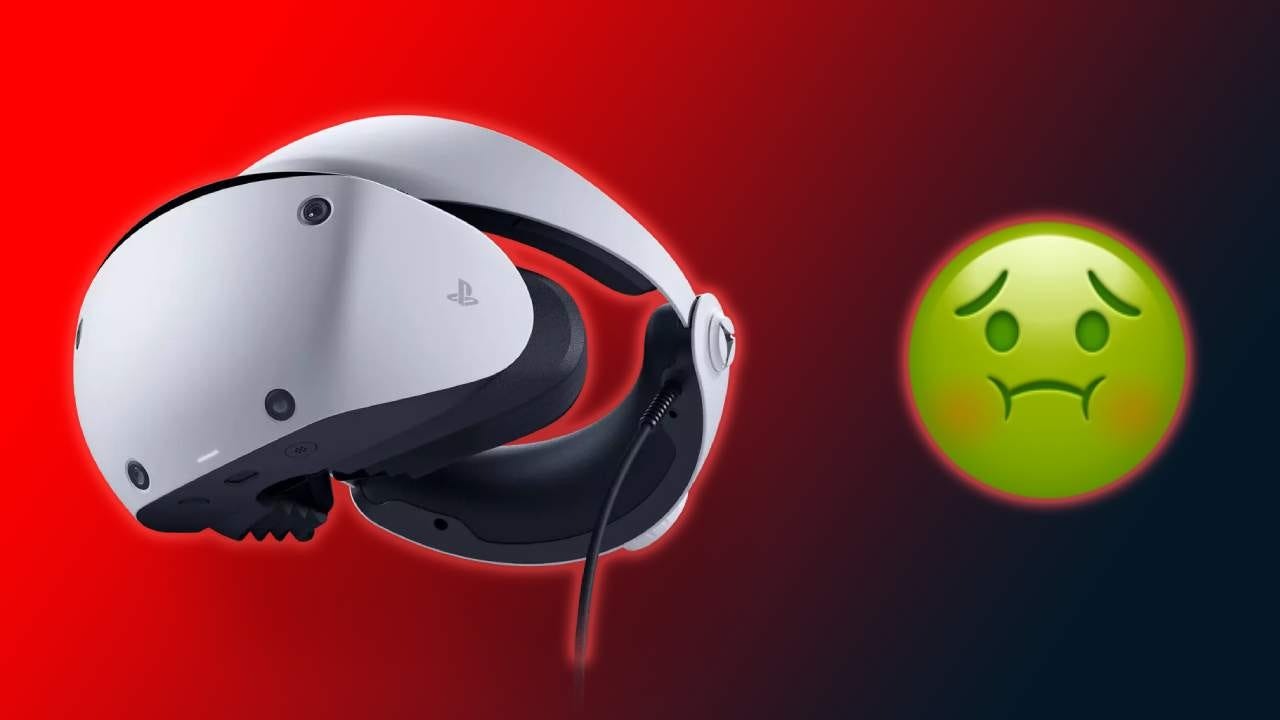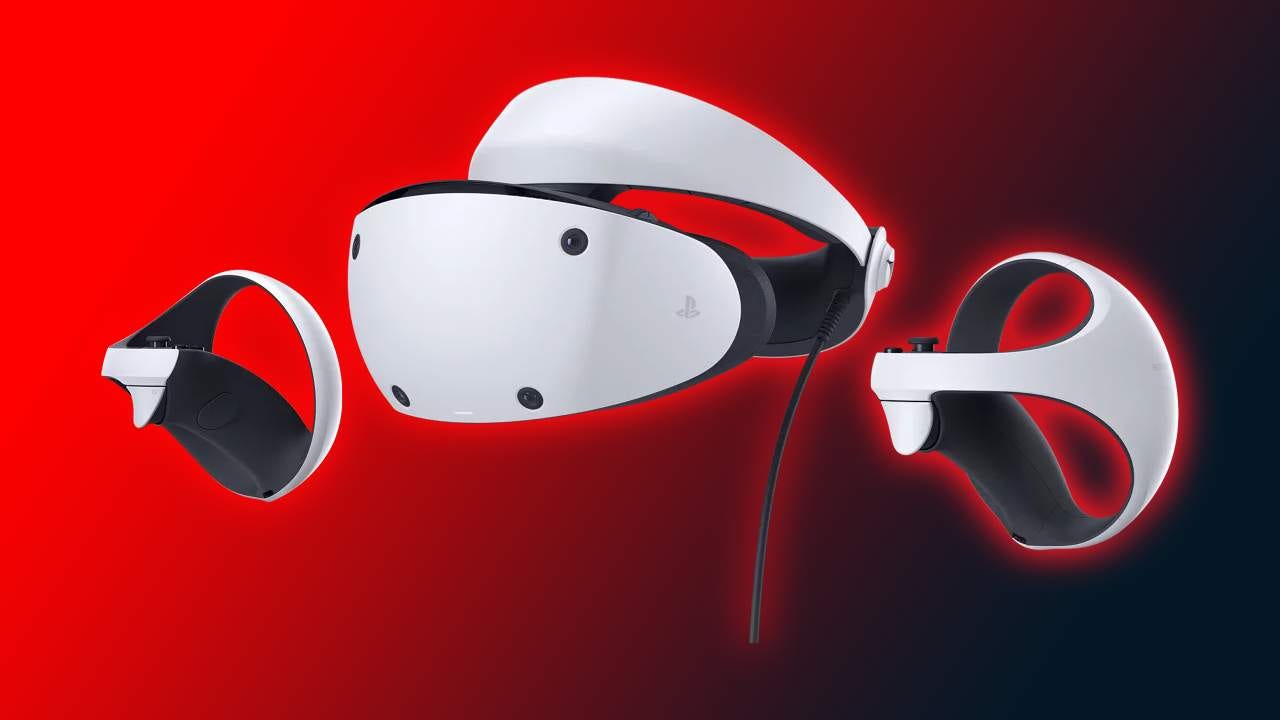Does PSVR 2 make you feel sick?
Motion sickness is a worry with any VR headset, but what about PlayStation VR2?
Not everyone is equipped to handle the mind trickery that virtual reality creates, which is why you may be wondering if PSVR 2 makes you feel sick. After all, motion sickness can be common for some VR players and even traditional displays can make some people feel a little queasy, depending on the game.
Huge strides have been made to combat motion sickness in VR, however. Higher refresh rate displays have helped reduce ghosting and make games appear smoother in motion and comfort settings can also help – like making navigating around virtual worlds feel less jarring. But does PSVR 2 make you feel sick? And is PSVR 2 worth it if you are susceptible to motion sickness? Here’s what you need to know.
While Sony has adopted many of the best practices other manufacturers have introduced, it doesn’t mean that some PSVR 2 games won’t make you feel queasy at times. Several features help the PSVR 2 mitigate motion sickness. Sony’s headset has a fast refresh rate of 90Hz/120Hz that makes things easier on the eyes and a novel feature that not many other headsets have: a vent. The vent can prevent you from feeling stuffy and from the headset steaming up during more vigorous gaming sessions.
Many games now offer comfort settings that can also counteract the negative effects of playing in VR. Options to reduce fast motion, teleporting instead of using an analog stick for movement, and other settings like lessening the impact of swinging the camera around tend to be available in most modern VR games.
PSVR 2 doesn’t eliminate the risk of motion sickness, but there are some things you can do to reduce your chances of feeling nauseous if you’re planning on buying Sony’s headset.
How to reduce motion sickness when using PSVR 2 😌
If you’re experiencing motion sickness when using PSVR 2, here are some tips you can follow that should prevent you from having to lie down in the fetal position for a few hours each time you play.
1. Play PSVR 2 games in short bursts
The most frequent advice you’ll see for those who are new to VR is to play in short bursts. As someone who is still relatively inexperienced with virtual reality, I can tell you that I wish I’d stuck to this rule more often. At first, you’re best playing VR games in small doses to build up your tolerance levels. After that, things should get a little easier.
Even the PSVR 2 instruction manual recommends taking regular breaks every 15 minutes for every hour you play, though this will vary from person to person.
2. Wear motion sickness wristbands
Nausea relief wristbands can be incredibly effective for those who suffer from motion sickness. They use acupressure to lightly press against your wrists to deliver fast-acting, drug-free results. They’re relatively cheap, and I can personally attest that they mitigate motion sickness somewhat, although not entirely.
3. Opt for seated VR games over standing ones
Many VR games can be played sitting down, which can help you to stop feeling sick. Because you’re firmly planted to the ground, your brain is less likely to be tricked than if you were standing upright. I’ve found that playing seated VR games is far easier to handle than those that require a lot of movement. These are all the PSVR 2 games you can play sitting down.
4. If you start feeling sick, stop
This may seem obvious, but if you take any advice from this article, let it be this: stop playing PSVR 2 if you start to feel sick. It can be tempting to ignore any feelings of nausea that may arise, but pushing through it is not a good idea. You’re likely to prolong any motion sickness you may have, and it could result in hours, if not days, of feeling rather sorry for yourself. It’s simply not worth it.
5. Don’t play PSVR 2 if you’re tired
Sony advises not to use PlayStation VR2 if you’re tired or need sleep. It also says PSVR 2 shouldn’t be used if you’re feeling “dizzy, light-headed, nauseated, sick, under the influence of alcohol or drugs, or have an impaired sense of motion or balance.”
6. Lower the headset’s brightness
I’ve found that lowering the PSVR 2’s brightness can significantly help stave off the feelings of motion sickness. The PSVR 2 has two OLED displays for each eye which can get incredibly bright, but it can be punishing on your retinas – particularly during brighter scenes with white backgrounds.
Users have found that lowering the headset’s brightness can also help with PSVR 2’s persistence issues. The headset produces a lot of motion blur compared to headsets that use LCD panels, but lowering the brightness can reduce the amount of motion blur that PSVR 2 exhibits in games.
7. Play in a well-ventilated area
It may seem trivial, but playing in a room that’s cool and airy can help combat nausea when playing PSVR 2. The headset has a fan inside that prevents the headset from fogging up when you’re playing, but it doesn’t exactly keep you cool, nor is it designed to. If you’re playing in a warm, stuffy room, try cracking a window open before you jump into your next VR game.
8. Use in-game comfort controls
Some titles, like Horizon Call of the Mountain, include in-game comfort controls that help negate motion sickness. Settings include slow movement speed, screen vignetting, smoother rotation, and “disable falling while climbing”. It’s worth activating as many comfort settings as possible if you’re new to VR or susceptible to motion sickness, as it can help keep nausea at bay.
Stick to these eight rules, then, and there’s a good chance your experience with PSVR 2 will be positive. However, remember to take it easy if you’re new to VR – it’s a lot for your eyes and brain to take in, so take regular breaks and stop as soon as you start to feel sick. Also, ensure your children are old enough to play PSVR 2.
Updated: August 5, 2024





Also new to VR and can confirm a slight, queasy linger after 40mins of CotM. Not bad for a first time, and gameplay is fascinating.
Hugely disappointed in Cinematic Mode, though, identical to a 720p plasma television I had in 2009. Which is a shame ... the virtual screen is adjustable and an ideal setting to play games or watch movies. Had I known it was so blurry and low-res, I would not have picked up PS VR2.